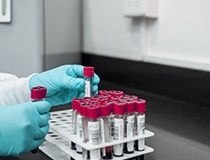Healthcare is constantly evolving. Innovations, such as new medical approaches and technologies, pave the way toward more effective treatment of disease and injuries. One of these is regenerative medicine.
This rapidly growing field of medicine is showing great promise and giving hope to patients with various conditions, from bone and joint disorders to Alzheimer's disease. Regenerative medicine can potentially revolutionize the way health conditions are treated by harnessing the body's natural ability to heal.
In this article, we dive deeper into regenerative medicine and its applications, particularly cellular therapy (CT) and platelet-rich plasma (PRP) injections.
What Is Regenerative Medicine?
While modern healthcare has made great strides, chronic diseases like heart disease, Parkinson's disease, diabetes and Alzheimer's disease still cannot be cured. At best, medical providers can only manage the symptoms.
An emerging and innovative field of medicine, regenerative medicine has the potential to further change the healthcare landscape by revolutionizing how these chronic conditions and other diseases are treated.
Regenerative medicine refers to treatments that aim to repair or replace diseased or damaged human cells, tissues or organs to restore normal function. It encompasses multiple scientific disciplines, including genetics, biochemistry and molecular biology.
Beyond addressing symptoms, regenerative medicine addresses the root cause of illness and injury by leveraging the body's natural healing ability. It can also result in treatments that work even on permanently damaged organs.
Types of Regenerative Medicine
There are many types of regenerative medicine, but they can be broadly categorized into the following:
- Tissue Engineering and Biomaterials
- Medical Devices and Artificial Organs
- Cellular Therapies
- Platelet-Rich Plasma (PRP) Therapy
The third and fourth types, cellular therapies (CTs) and platelet-rich plasma (PRP), are rapidly developing fields with the potential to revolutionize the treatment of various diseases and conditions and improve the quality of life of millions of patients.
A Deeper Look at Stem Cell Therapy: A Promising Field Within Regenerative Medicine
Stem cells are unspecialized cells that have the potential to develop into different types of cells in the body. Stem cell therapy uses stem cells to repair or replace damaged or diseased tissue.
Stem cells are the foundation cells of the body—they have not yet been "programmed" to have specific functions. Under the right conditions, stem cells can develop into specialized cells and organs.
The stem cells used in cellular therapies are categorized into two main types: embryonic and adult.
Embryonic stem cells are pluripotent, which means they can turn into any cell in the human body.
Meanwhile, adult stem cells are further categorized into several subtypes. Three of the most commonly used in regenerative medicine are mesenchymal stem cells (MSCs), hematopoietic stem cells (HSCs) and induced pluripotent stem cells (iPSCs).
Mesenchymal stem cells (MSCs) can differentiate into various cell types, including bone, cartilage and muscle cells. They are found in multiple areas of the body, including adipose or body fat tissue, umbilical cord blood and bone marrow.
Meanwhile, hematopoietic stem cells (HSCs) are found in peripheral blood (PB), umbilical cord blood and bone marrow. It can differentiate further into specific kinds of blood cells, including red and white blood cells, as well as platelets. One advantage this type of stem cell has over others, particularly embryonic stem cells, is that, since HSC have already differentiated somewhat, they have a lower risk of becoming malignant, cancer-causing cells.
Like embryonic cells, induced pluripotent stem cells (iPSCs) are pluripotent. They are derived from adult skin or blood cells and reprogrammed into an embryonic-like state in a laboratory. iPSCs can potentially differentiate into any cell needed for treatment purposes.
How Stem Cell Therapy Works
In stem cell therapy, stem cells are injected into the diseased or damaged tissue site to repair or regenerate it. Depending on the type of stem cells used, they are harvested from sources such as:
- Blood
- Cord blood
- Bone marrow
- Skeletal muscle
- Dental pulp
Perhaps the most commonly known form of stem cell therapy today is hematopoietic (blood) stem cell transplantation, referred to as bone marrow transplant. However, there are many other current applications for stem cell therapy, particularly in treating orthopedic conditions such as:
- Tendonitis
- Tendon tears
- Achilles tendinopathy
- Tennis elbow
- Golfer's elbow
- Rotator cuff tendinopathy
- Ligament and muscle injuries
- Cartilage damage
- Arthritis
- Osteoarthritis
Scientists and other clinical professionals are researching more cell therapy applications for a broader range of medical conditions.
An Overview of Platelet-Rich Plasma in Regenerative Medicine
Platelet-rich plasma (PRP) is a blood product that is essentially plasma with a higher concentration of platelets. Platelets or thrombocytes are blood cells that help with clotting and stopping bleeding during injury. They also contain growth factors.
Platelet growth factors (PGFs) are substances released when platelets are activated. Studies have shown PGFs to play a crucial role in healing wounds. They also facilitate angiogenesis, or the formation of new blood vessels, and tissue remodeling.
Platelet-rich plasma (PRP) is used in PRP therapy, a type of regenerative medicine popular for a wide range of injuries and conditions.
How PRP Therapy Works
PRP is prepared by drawing and centrifuging a patient's blood to separate the platelets from the other blood cells. The platelets are then concentrated and injected into the area of the body that needs to be healed.
PRP therapy is a popular nonsurgical treatment option for various musculoskeletal conditions. These include:
- Chronic tendon injuries or tendonitis
- Tendon and ligament tears or injuries
- Cartilage damage
- Arthritis
- Muscle injuries
- Osteoarthritis of the knee, hip and shoulder
Additionally, PRP therapy is used to treat hair loss, and some practitioners also use PRP therapy for skin rejuvenation.
PRP injections are helpful in accelerating healing after certain surgeries that typically have long recovery times. Examples include surgical procedures on tendons, ligaments and muscles.
Regenerative Medicine Therapies at the American Hip Institute
The American Hip Institute (AHI) is nationally recognized for its advanced treatments of injuries and conditions affecting the hip and other joints. Through Chicago Cell Therapy & Regenerative Medicine, we provide minimally invasive regenerative medicine therapies to support our patients' healing. These include platelet-rich plasma (PRP) injections and cell therapy.
Contact us to book an appointment today.


 Thanks a lot for getting my hip right. Looking forward to a full recovery and a great season. Thanks again for everything.
Thanks a lot for getting my hip right. Looking forward to a full recovery and a great season. Thanks again for everything.










